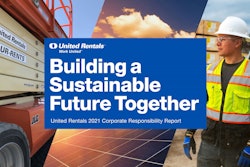
Many small businesses posted a strong year of growth in 2021 as government stimulus, changing lifestyles and improved COVID-19 conditions fueled consumer spending. Experts expect this trend to continue in 2022 as supply chains begin to unclog, domestic production capacity improves and continued investment in technology, infrastructure and efficiency produce broad economic gains.
Through periods of economic expansion, recession, natural disasters and now a global pandemic, it’s okay to be excited yet cautious. Here are some projections for 2022.
Construction Outlook
The U.S. construction industry will continue to benefit from the white-collar economy transitioning to remote work, driving demand for home improvements as well as second home purchases. In addition, new government spending from the Infrastructure Bill and budget earmarks to encourage energy efficient construction will power additional demand for both residential and commercial projects.
Manufacturing Outlook
Stretched and unreliable supply chains have forced retailers and wholesalers to look for more dependable manufacturing partners closer to home. This trend will continue in 2022 as domestic manufacturing incentives in the Infrastructure Bill kick in and as investments in factory automation make U.S. manufacturing more cost competitive in the long run vs. lower-cost labor markets overseas. The result will be continued repatriation of manufacturing to the United States and North American neighbors.
Inflation
The U.S. inflation rate surged in 2021 led by the energy and automotive sectors. Other raw materials also surged during the summer months but then cooled as supply chain issues began to improve. While leaders expect inflation to remain higher in 2022 than the recent historical average, planned Federal Reserve rate hikes, increased investments in energy production and repairs to the supply chain will combine to cool inflation in the latter half of the year. Lower inflation is generally preferable for small businesses that struggle to pass on higher costs of goods and labor to their customers without negatively impacting demand.
Supply Chain Normalization
Expect disruptions in the supply chain to improve but not fully return to normal in 2022. Lead times will come down for many products, especially those with fewer component parts and those manufactures in onshore or nearshore locations. However, expect labor shortages to persist in 2022, causing strains on manufacturing as well as the trucking and logistics sector. Also expect backlogs in ports and on cargo ships around the world as pent-up demand continues to outstrip the supply of containers, ships and port-space. COVID-19 spikes in China could exacerbate existing problems in the global supply chain.
Changes to the Political Environment
Political polarization has reached an extreme, making bi-partisan legislation extremely difficult. As we enter a mid-term election year, it is hard to see legislation outside of a slimmer version of the Build Back Better Act being passed before a new Congress has been seated in January 2023. In the interim, small businesses should keep an eye on the Federal Reserve to gauge how aggressively it chooses to implement rate hikes as these actions could have a significant impact on consumer prices and economic growth in the coming year.
The small business economy has proven resilient over the last two years of unprecedented turmoil and change. Expect the remainder of 2022 will bring a welcome sense of normalization as the virus dissipates, inflation weakens and some supply constraints are resolved. However, many uncertainties remain for America’s small businesses, and the coming year will prove as eventful and potentially more opportunistic than those of recent past.


















